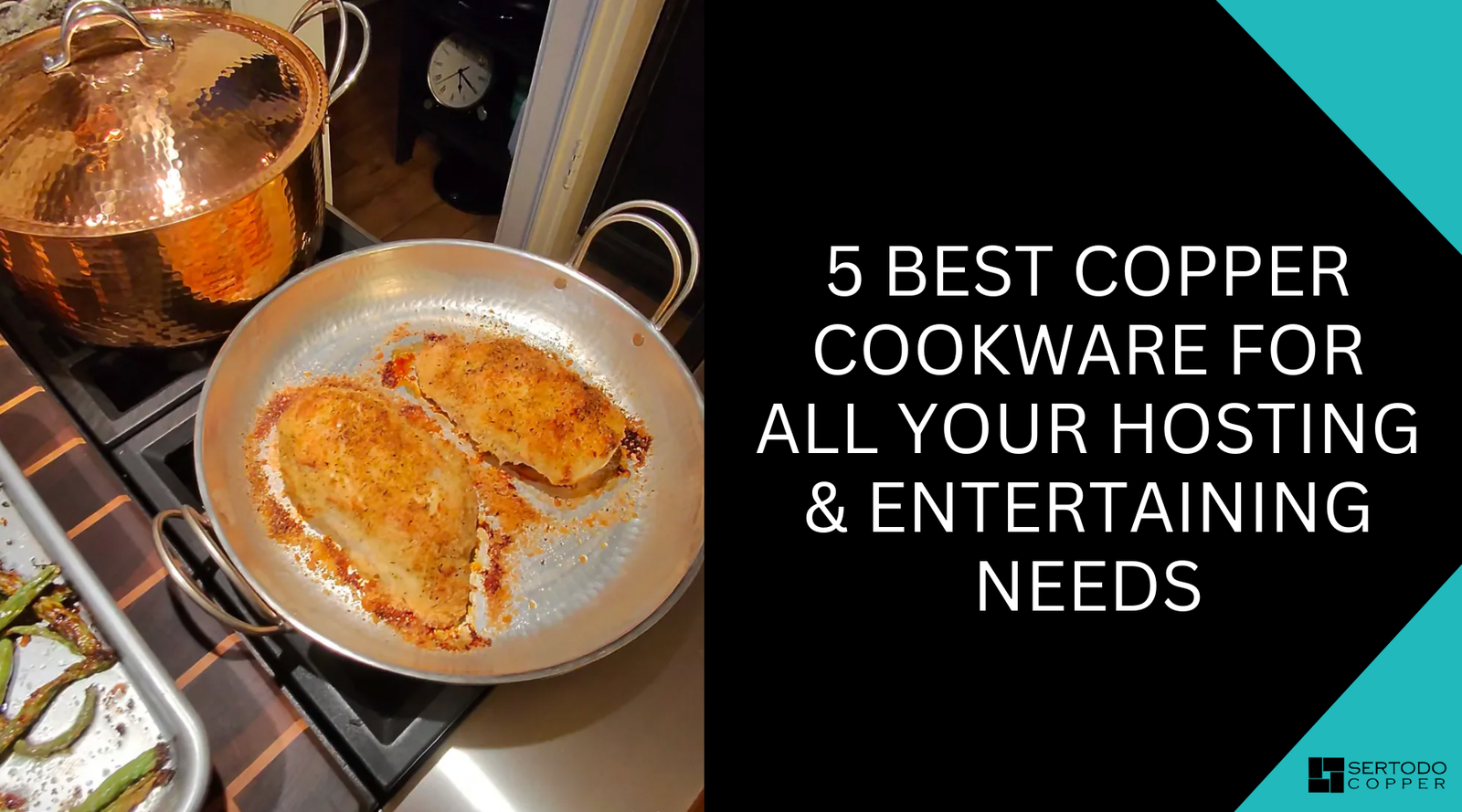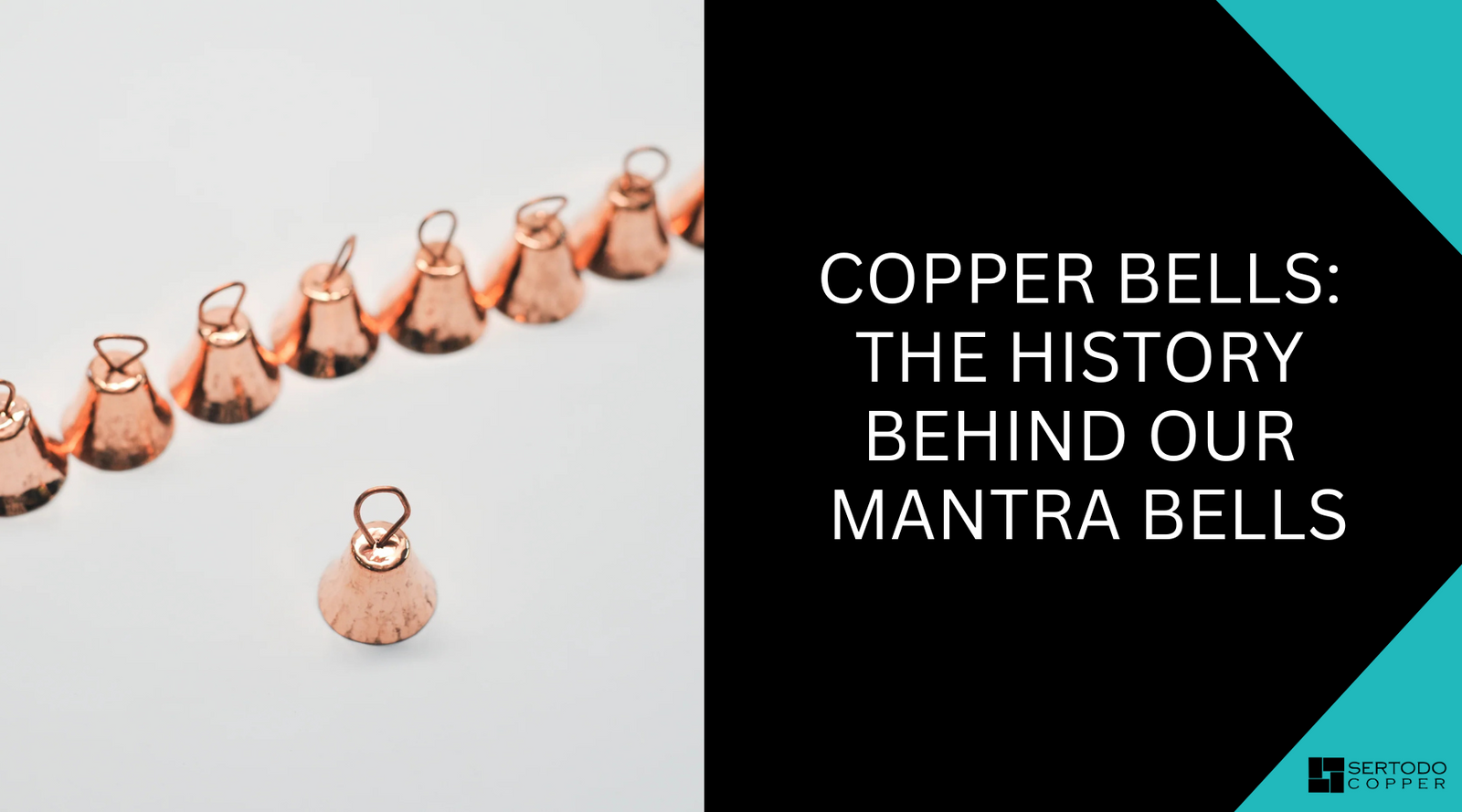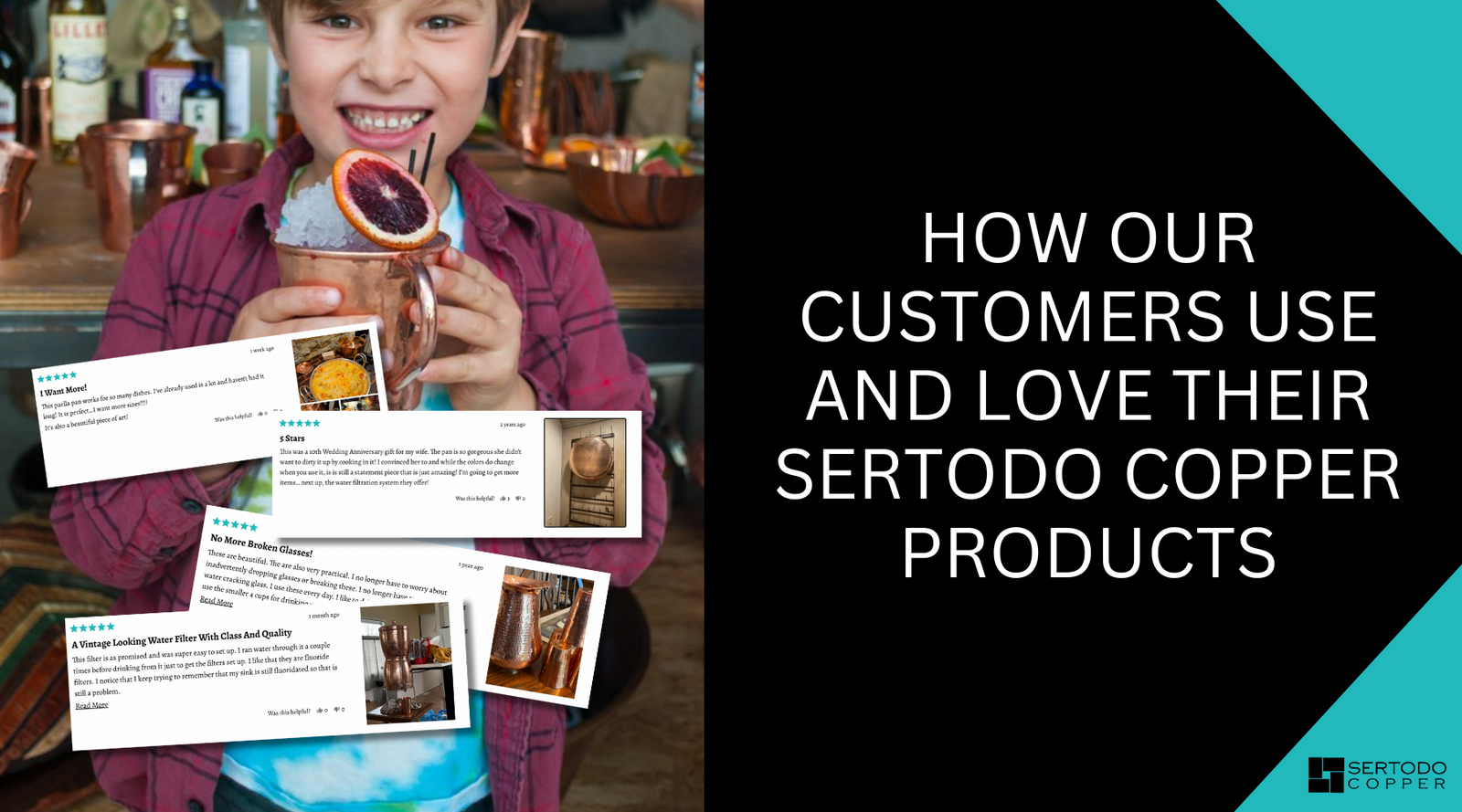Copper chafing dishes have been a staple in the food industry for centuries. The use of copper in cookware has been around since the Bronze Age, and it has been a popular choice ever since. Although the popularity of chafing dishes started from the 16th century, in which delicacies such as fish, eggs and cream were kept warm before serving.
By the 1890s, the humble chafing dish morphed from a luxury item made from copper or silver, to an indispensible item or any serious hostess or host who loves to entertain.
Copper is known for its high conductivity, durability, and beauty, making it an ideal choice for chafing dishes.
But how does copper compare with other materials such as stainless steel, aluminum, and cast iron? In this article, we will explore the advantages and disadvantages of copper chafing dishes when compared to other materials.
Why is it called a chafing dish?
The term "chafing dish" comes from the French word chaffeur, which means "to make warm".
The ultimate catering and entertaining piece for events, the best materials for a chafing dish is one that is impact-resistant, scratch-resistant and easily presentable.
A chafing dish is a piece of serving equipment used to keep food warm for extended periods. It is a popular choice for catering events, buffets, and any other occasion where food is served to a large group of people.
The purpose of a chafing dish is to keep the food at a consistent temperature, ensuring that it remains safe and tasty for guests to enjoy. Chafing dishes come in a range of sizes and styles, from small individual dishes to large, multi-tiered options. They typically consist of a metal frame, a heating element, and a container for holding the food.
Similar posts you might like:
What material are chafing dishes made of?
Modern chafing dishes are made from a variety of materials, each with its own unique benefits and drawbacks.
Stainless steel is a popular option due to its durability, affordability, and easy maintenance. Aluminum is another common choice, as it is lightweight and conducts heat well. On the other hand, glass and ceramic chafing dishes are also available, offering an elegant look that can complement any decor.
However, one of the most popular materials for chafing dishes is copper.
Copper chafing dishes are renowned for their excellent heat conductivity, which makes them ideal for keeping food warm for extended periods. They also offer a unique aesthetic that can add a touch of elegance and sophistication to any event.
Our handmade Copper Round Dome Chafers and Syracuse Rectangular Copper Chafer are one of a kind serving dishes like no other, and will certainly impress all of your guests! Besides, both of our copper chafing dishes are easily compatible with standard food pans and half pans. This makes entertaining and catering a breeze whenever you use our Copper Chafing Dishes!
How Copper Compares With Other Materials As A Chafing Dish
So, how does copper compare with other materials such as stainless steel, aluminum, glass and ceramic?
One of copper's top advantage over other materials is its even heating performance and good conductivity. In other words, copper heats up quickly and responds quickly to changes in temperature, making it a popular choice for professional chefs. Therefore, copper chafing dishes are able to maintain a consistent temperature, which is important for keeping food warm and fresh.
Another advantage of copper chafing dishes is their one-of-a-kind beauty and elegance.
Copper is a highly attractive metal, with a warm, lustrous glow that is unmatched by other materials. Copper chafing dishes are often highly decorative, with intricate designs and patterns that add a touch of sophistication and elegance to any event.
Not to mention, copper is also highly malleable, which means that it can be shaped and formed into a wide range of shapes and designs, making it a highly versatile material for chafing dishes.
However, there are also some disadvantages to using copper chafing dishes.
One of the main disadvantages is that copper is a reactive metal, which means that it can react with certain foods and liquids including acidic foods such as tomatoes and citrus fruits. Copper's reactivity can cause the food to taste metallic and potentially cause health problems.
Another disadvantage of copper chafing dishes is their high cost. Copper is a relatively expensive material compared to other materials such as stainless steel and aluminum. This can make it difficult for some people to justify the cost of a copper chafing dish, especially if they are only using it occasionally.
However, if you are looking for a durable chafing dish that will last you for years to come, our heavy gauge Copper Chafers or Chafing Dishes are extremely durable.
Below is a comparison of how well copper fares as a material for a chafing dish with aluminum, glass and ceramic:
| Parameter | Copper | Stainless Steel | Aluminum | Glass | Ceramic |
|---|---|---|---|---|---|
| Heat Source | Compatible with all heat sources, including induction | Compatible with most heat sources, including induction | Compatible with most heat sources, including induction | Not compatible with all heat sources, may break under high heat | Compatible with most heat sources, including induction |
| Finishing and Styling | Often has a polished, classic look | Can have a modern or classic look, depending on finish | Often has a modern, sleek look | Often has a delicate, decorative look | Can come in a variety of styles, from rustic to modern |
| Durability | Relatively durable, but can tarnish or scratch over time | Highly durable and resistant to scratches and dents | Moderately durable, but may warp or dent with heavy use | Less durable than metal or ceramic, prone to chipping or cracking | Highly durable and resistant to scratches, chips, and cracks |
| Heat Conductivity | Excellent heat conductivity and even heat distribution | Good heat conductivity, but not as even as copper | Good heat conductivity, but not as even as copper | Poor heat conductivity compared to metals, but can withstand high heat | Good heat conductivity and even heat distribution |
As you can see from the table above, stainless steel is another popular choice for chafing dishes because it is durable, easy to clean, and does not react with food or liquids.
However, stainless steel is not as conductive as copper, which means that it may not heat up as quickly or maintain a consistent temperature as well as copper. This can definitely affect how well your food is kept warm, and thus the success of any catering or entertaining event.
Aluminum is another popular choice for chafing dishes because it is lightweight, affordable, and highly conductive.
However, aluminum is not as durable as copper or stainless steel, as it may warp or dent with heavy use. If you are a professional caterer, or an avid entertainer, this means your aluminum chafing dish will not last you for many years. Glass and ceramic chafing dishes both also have disadvantages when it comes to durability and heat conductivity.
Final Takeaway - Why Copper Chafing Dishes Are Superior
In conclusion, copper chafing dishes are an excellent choice for those looking for a highly conductive, elegant, and beautiful option.
Copper is able to maintain a consistent temperature, and its beauty and elegance make it a popular choice for special events and occasions. However, copper can react with certain foods and liquids, and it is also relatively expensive compared to other materials.
That being said, if you are looking for high quality chafing dishes that will withstand years of use and outstanding presentation, our handmade Copper Chafing Dishes will definitely give you years of beautiful service!






